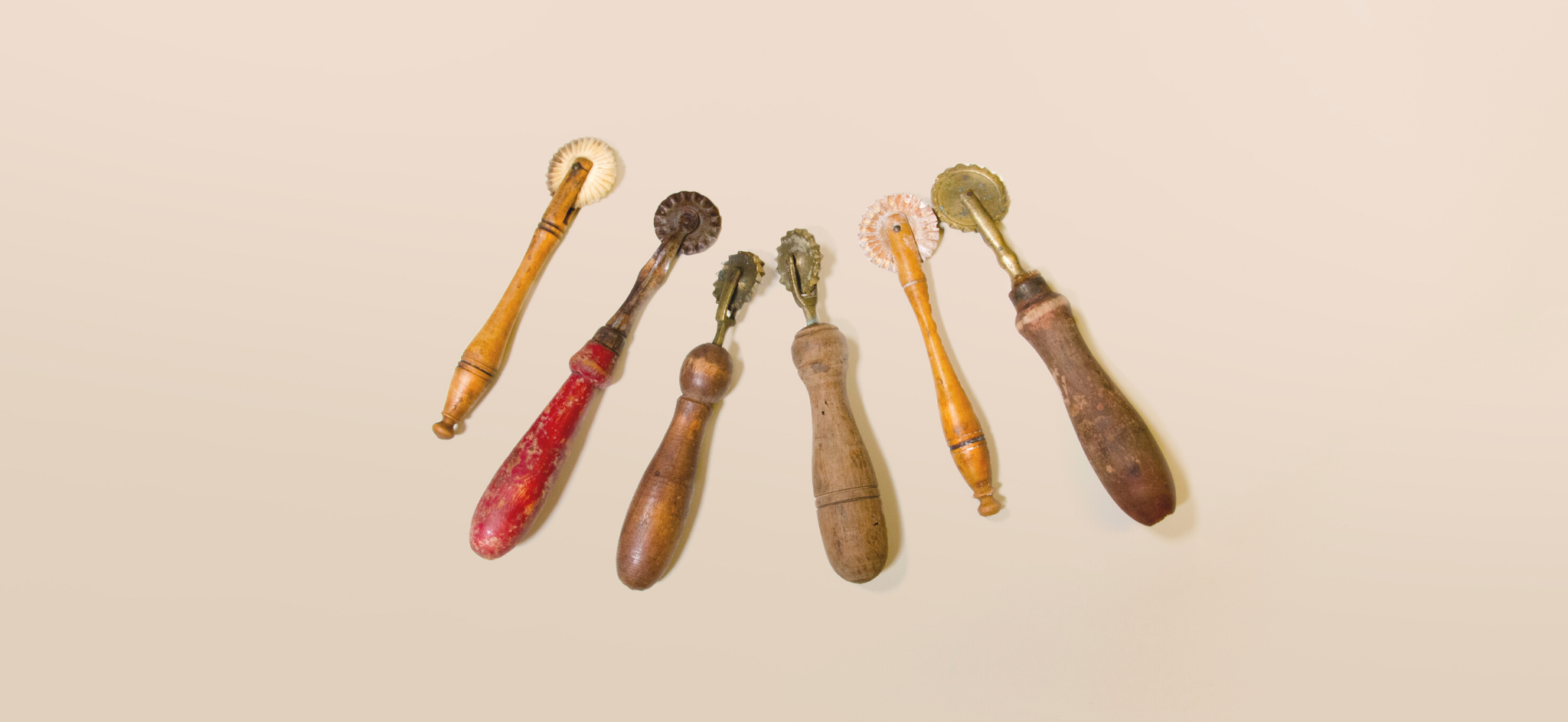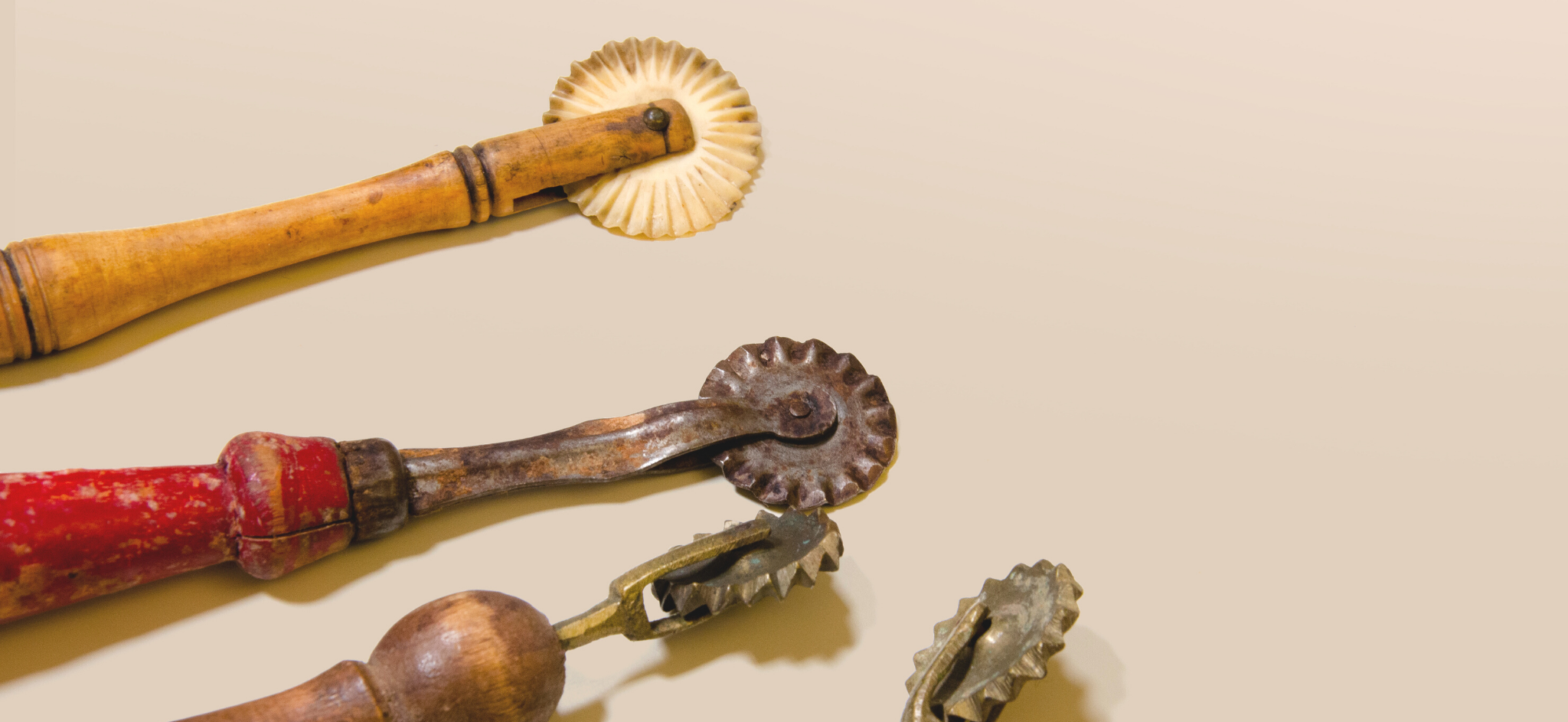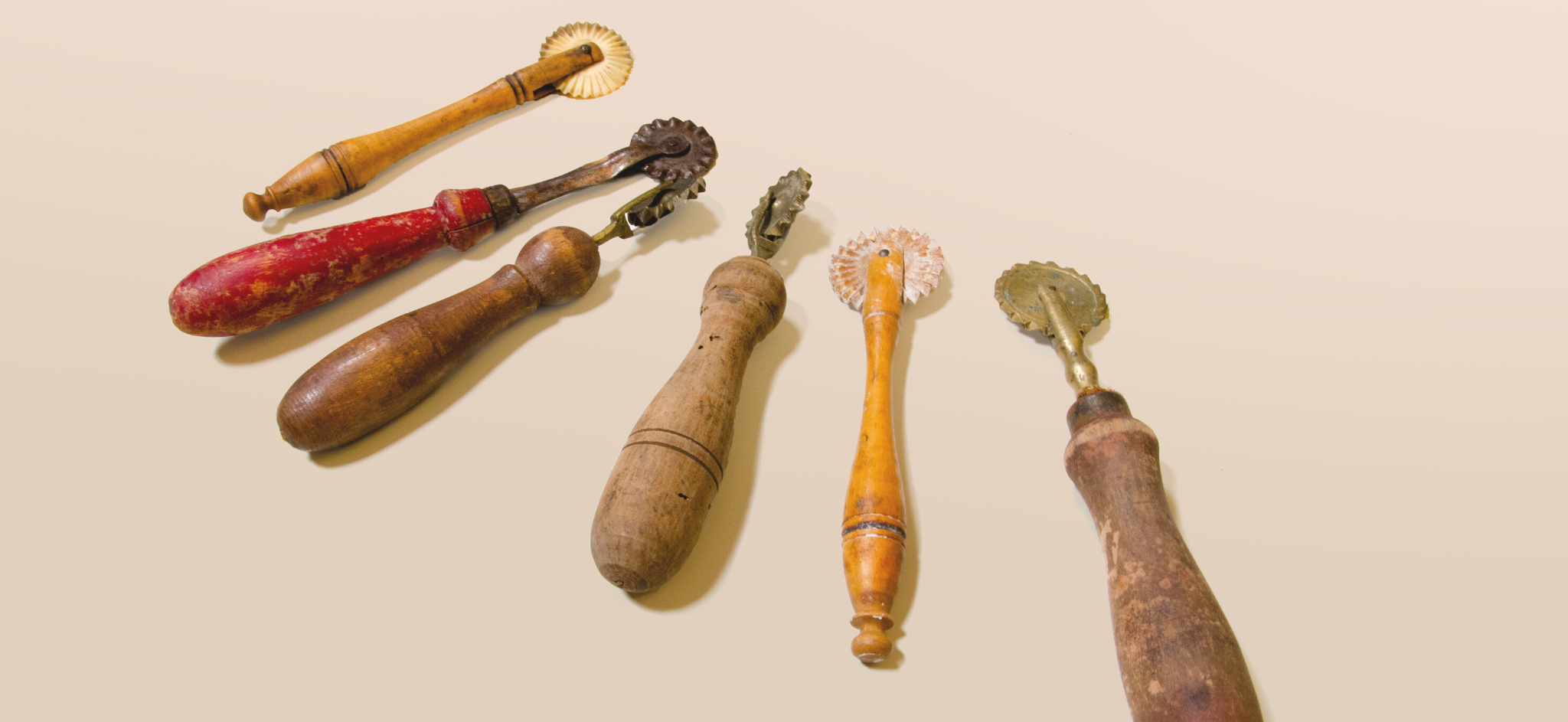The pastry cutter wheels: tools of yesterday and today
Pastry cutter wheels are tools that generally bring everyone back to a past made up of domestic memories, of days spent in the kitchens with mothers and grandmothers, like little helpers grappling with fresh pasta.
In reality, they have always been used, without distinction, both in the professional and home environment. The only difference between the two uses is that in the first case the instrument consists of a series of wheels placed one next to the other, whose distance is adjustable by a mechanism similar to an accordion (the name of the tool is bicycle), in domestic use the version we all know prevails.
At the Loison Museum there are a series of pastry cutter wheels of very different sizes and materials, dating between the thirties and seventies of last century.
The pastry cutter wheel, also called “speronella” in some areas of Italy, is one of those kitchen tools that has come down to us almost unchanged. Although in fact, especially in the past, it could be made up of different materials and have handles of different shapes (even of animals or mythological lucky beings), the overall structure was the same in all cases. The only substantial modification that it underwent over time is in the top (the functional part of the object) which was initially made up of a sort of sting with which the pasta was pierced and, in the Late Middle Ages, was gradually replaced by the wheel as we know it today. This apparently trivial modification was instead functional to the practicality of the object and its continuous and prolonged use, allowing, at the same time, to obtain uniformity in the results.
Over time this instrument was an emblem of wealth and well-being, especially in relation to the materials with which it was built: if in fact the wood one was typical of the lower classes, in the rich houses there were even examples in silver with bone or mother-of-pearl handles. In addition, during the nineteenth century the range of materials used for its realization expanded considerably, both according to the class, the uses or the production areas. There were pastry cutter wheels made by wood or precious silver, even by pottery and porcelain.
Curiosity! The first example of a pasta cutter wheel
Evidence of its existence is ancient and dates back to even before the advent of Christ. The first known example of its representation dates back to the 4th century B.C., inside the Etruscan tomb called “Tomba dei Rilievi”, near Cerveteri, whose name derives from the fact that the elements of the funeral equipment of the family to which it belonged were represented in relief.
Its presence in professional kitchen environments is attested in writing for the first time in 1549 in the work “Banchetti composizione di vivande e apparecchio generale” by Cristoforo di Messisbugo, an Italian chef of the first half of the sixteenth century. In the same context, its first performance was in 1570 by Bartolomeo Scappi in his famous opera.




